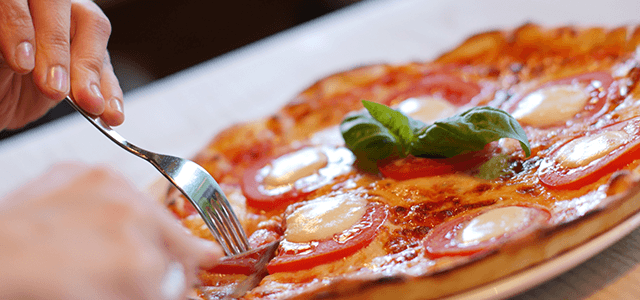If someone gave you a 10-inch pizza, you wouldn’t try to put all of it in your mouth, would you? Of course not. You’d cut it up into bite-size portions. Yet there is often a danger of expecting our learners to do that; feeding them too much information and expecting them to consume it all without difficulty. The consumption of information… learning, in other words, needs to be “chunked”, broken up into pieces that can be handled easily.
Cognitive Load Theory originated in 1988 when John Sweller, an educational psychologist at the University of New South Wales in Australia, developed theories around the working memory. His work showed that learners who were given too much information, or material that wasn’t always relevant to the learning objective, got confused, lost interest and retained very little of it over time.
Working memory can only hold 4-5 pieces of information at one time (try memorising half a dozen new phone numbers and then repeating them fifteen minutes later!) and information in working memory lasts only around ten seconds. It’s easy to overlook this vital educational psychology, but we ignore it at our peril. The temptation is to cram as much content into a course because it’s what our learners need to know. The secret is to find ways in which to PROCESS that content.
Let’s begin by looking at the THREE types of cognitive loads that our brains try to handle:
Extraneous
This is the information that is imposed on the learner – it might provide context, relevance, perhaps even motivation. As the title suggests, it isn’t strictly necessary. It can confuse things, provide too much for the learner to take in (like a 10-inch pizza).
Intrinsic
This is the information directly linked to the learning objective – it’s what we want our learners to actually learn. We need to be focused on the detail here. Learning objectives need to identify exactly what should be consumed. Vague learning objectives can inadvertently introduce extraneous cognitive load if you’re not careful.
Germane
This is the creation of processes that consume the content. These are the chunks. These processes (psychologists call them ‘schemas’) can become automatic when embedded into the working memory. For instance, the first time you saw a 10-inch pizza, what did you do? You probably chose to cut it up because you knew it wouldn’t fit in your mouth. So next time you saw another pizza, your brain told you to reach for the knife and fork.
There are all sorts of ways to create schemas. If you saw the phrase ‘Richard Of York Gave Battle In Vain’, lots of people in the UK would tell you it is a mnemonic to help you remember the colours and their order in a rainbow. That’s a very simple schema.
Learning needs to be “chunked” so these pieces of content form into a schema we will remember over time. If you drive, you were taught the processes involved in starting a car, putting it into gear and moving off into traffic… Mirror. Signal. Manoeuvre.
The overall task of the instructional designer is to create schemas or processes which enable the learner to take the content into the short-term memory and process it so that it remains in the long-term memory and becomes an automatic response. This process needs to be chunked, so the cognitive load does not overload the brain.
It is worth pointing out that this processing power may be different in younger people – millennials. There is research, admittedly not entirely conclusive, that suggests their ability to remember is even more limited. As ‘digital natives’ they expect information to be available instantly and may not be happy having to process it. The point here is even more relevant – young people may have an even greater need to have their content ‘chunked’.
So, when writing your courses – think pizza!
Phil Parker, Learning Development Consultant, Nimble Elearning


0 Comments